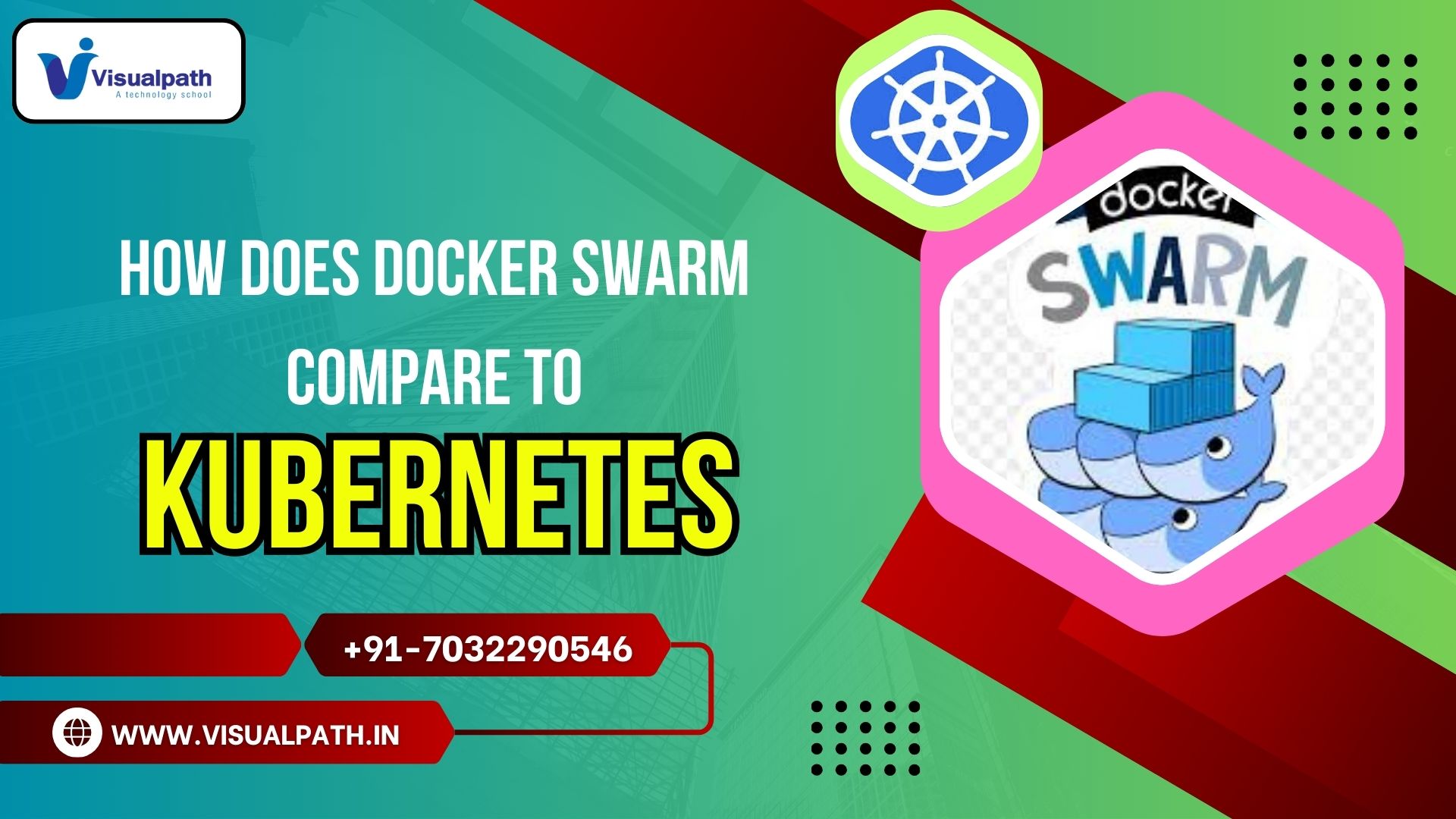As containerization continues to dominate the world of modern application development, orchestration tools like Docker Swarm and Kubernetes play a critical role in automating the deployment, scaling, and management of containerized applications. Both are powerful tools, but they cater to different needs depending on project complexity, team expertise, and infrastructure scale.
In this article, we’ll compare Docker Swarm and Kubernetes in terms of architecture, ease of use, scalability, community support, and use cases to help you decide which orchestration solution suits your needs best. Docker and Kubernetes Training
1. Overview: Docker Swarm vs Kubernetes
Docker Swarm is Docker’s native clustering and orchestration tool. It allows users to create and manage a cluster of Docker nodes as a single virtual system. It is tightly integrated with Docker CLI and Engine, making it easy for developers already familiar with Docker.
Kubernetes (K8s), originally developed by Google and now maintained by the Cloud Native Computing Foundation (CNCF), is a highly extensible, open-source platform for automating container operations. It is known for its robust features, large community, and enterprise-grade scalability.
2. Docker Swarm Architecture Comparison
Architecture:
- Swarm consists of manager and worker nodes.
- Managers handle cluster management and orchestration.
- Uses Docker services and stacks for deployment.
- Simplified built-in load balancing.
- Integrated with the Docker Engine for seamless setup.
Kubernetes Architecture:
- Master node controls the cluster via components like API server, controller manager, etcd, and scheduler.
- Worker nodes run pods, the smallest deployable units.
- Uses separate components for networking, storage, and service discovery.
- Complex but modular and customizable.
Verdict: Kubernetes has a more powerful and scalable architecture, while offers a simpler and faster setup. Docker and Kubernetes Course
3. Ease of Use
Docker Swarm:
- Easy to install and configure.
- Uses familiar Docker CLI commands.
- Ideal for developers and small teams.
Kubernetes:
- Steeper learning curve.
- Requires knowledge of YAML, manifests, and multiple components.
- Managed services like Azure Kubernetes Service (AKS) and Google Kubernetes Engine (GKE) simplify setup.
Verdict: we wins in terms of ease of use and quick learning, while Kubernetes is better suited for teams ready to handle operational complexity.
4. Scalability and Performance
Docker Swarm:
- Supports automatic scaling with limitations.
- Fast container deployment.
- Best for smaller or less complex applications.
Kubernetes:
- Highly scalable and designed for enterprise workloads.
- Supports auto-scaling, rolling updates, and self-healing.
- Can handle thousands of nodes and containers.
Verdict: Kubernetes leads in scalability, performance, and reliability for large-scale applications. Docker and Kubernetes Online Training
5. Networking and Load Balancing
Docker Swarm:
- Offers basic built-in load balancing using the routing mesh.
- Easier to configure internal networking.
Kubernetes:
- Uses kube-proxy, network plugins (CNI), and services for advanced networking.
- Offers internal and external load balancers, ingress controllers, and DNS-based service discovery.
Verdict: Kubernetes provides more flexible and robust networking options, though it’s more complex to configure.
6. Community Support and Ecosystem
Docker Swarm:
- Smaller community.
- Limited third-party tools and ecosystem.
- Slower feature updates.
Kubernetes:
- Massive global community.
- Backed by Google, Microsoft, AWS, Red Hat, and more.
- Rich ecosystem of plugins, tools, and integrations.
Verdict: Kubernetes dominates in community support, innovation, and ecosystem maturity. Docker Kubernetes Online Course
7. Best Use Cases
Choose Docker Swarm if:
- You need quick setup and deployment.
- You’re working on a small-to-medium-sized project.
- Your team is already familiar with Docker.
Choose Kubernetes if:
- You require high availability, auto-scaling, and failover.
- You’re managing microservices at scale.
- You need integration with cloud-native tools and CI/CD pipelines.
Conclusion
Docker Swarm excels in simplicity and ease of use, making it a great option for development teams and smaller deployments. On the other hand, Kubernetes shines in handling complex, large-scale, and enterprise-grade environments with high scalability and resilience requirements. Ultimately, your choice between Docker Swarm and Kubernetes should be guided by your application size, team expertise, and long-term operational goals. For large, production-ready systems with evolving needs, Kubernetes is the gold standard. For lightweight setups or quick proofs-of-concept, Docker Swarm may be just right.
Trending Courses: ServiceNow, SAP Ariba, Site Reliability Engineering




